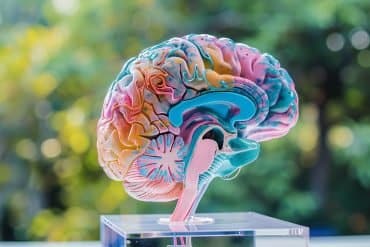Spinal Muscular Atrophy affects one in 6,000 children and has no known cure.
A team of University of Missouri researchers has found that introducing a missing gene into the central nervous system could help extend the lives of patients with Spinal Muscular Atrophy (SMA) – the leading genetic cause of infantile death in the world.
SMA is a rare genetic disease that is inherited by one in 6,000 children who often die young because there is no cure. Children who inherit SMA are missing a gene that produces a protein which directs nerves in the spine to give commands to muscles.
The MU team, led by Christian Lorson, professor in the Department of Veterinary Pathobiology and the Department of Molecular Microbiology and Immunology, introduced the missing gene into mice born with SMA through two different methods: intravenously and directly into the mice’s central nervous systems. While both methods were effective in extending the lives of the mice, Lorson found that introducing the missing gene directly into the central nervous system extended the lives of the mice longer.

“Typically, mice born with SMA only live five or six days, but by introducing the missing SMN gene into the mice’s central nervous systems, we were able to extend their lives 10-25 days longer than SMA mice who go untreated,” said Lorson, who works in the MU Bond Life Sciences Center and the College of Veterinary Medicine. “While this system is still not perfect, what our study did show is that the direct administration of the missing gene into the central nervous system provides some degree of rescue and a profound extension of survival.”
There are several different types of SMA that appear in humans, depending on the age that symptoms begin to appear. Lorson believes that introducing the missing gene through the central nervous system is a way to potentially treat humans regardless of what SMA type they have.
“This is a treatment method that is very close to being a reality for human patients,” Lorson said. “Clinical trials of SMA treatment using gene therapy are likely to begin in next 12-18 months, barring any unforeseen problems.”
Notes about this spinal muscular atrophy research and article
Contact: Nathan Hurst – University of Missouri
Source: University of Missouri press release
Image Source: Spinal Muscular Atrophy mice image was adapted from an image by the US National Institute of Health and is in the public domain. Feel free to use.
Original Research: Abstract for “Direct central nervous system delivery provides enhanced protection following vector mediated gene replacement in a severe model of Spinal Muscular Atrophy” by Jacqueline J. Glascock, Monir Shababi, Mary J. Wetz, Megan M. Krogman and Christian L. Lorson in Biochemical and Biophysical Research Communications 6 January 2012 Volume 417, Issue 1, 6 January 2012, Pages 376-381 doi: 10.1016/j.bbrc.2011.11.121







